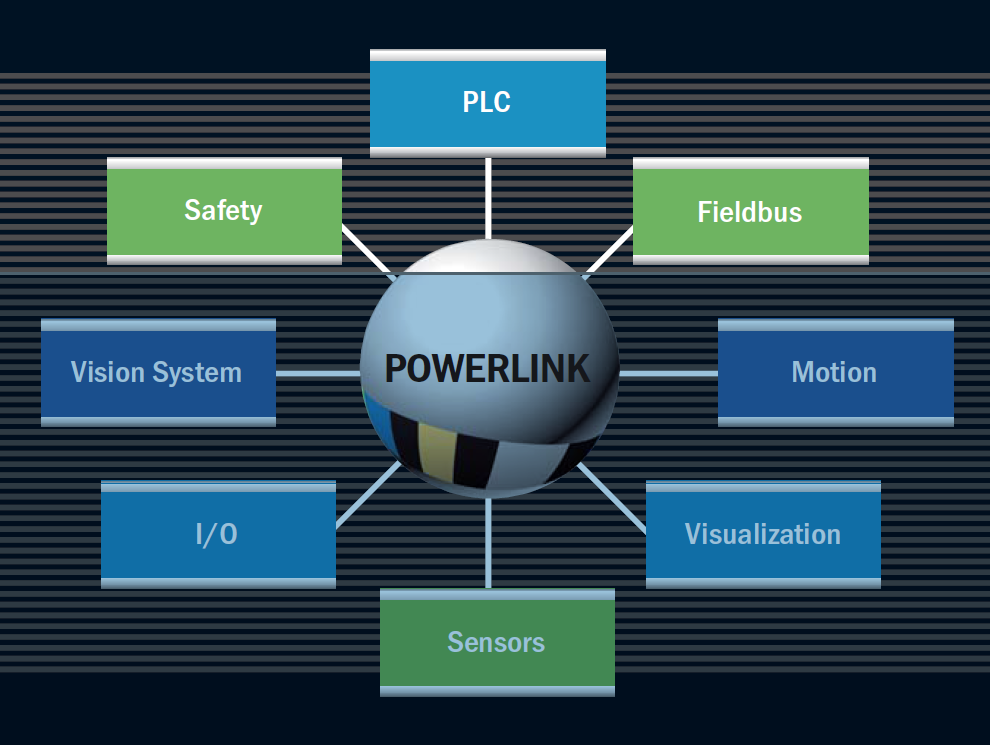SSZTCK8 june 2015
We are happy to have our guest blogger, Sari Germanos today. Sari is the Technology Marketing Manager for the Ethernet POWERLINK Standardization Group. His expertise lies in developing complex distributed real-time mechatronic applications. He also has significant experience in applying simulation technologies to improve the efficiency of developing large-scale distributed systems.
There are many applications that require discrete machine synchronization. Label printing applications require that a print-head start printing based on a specific label location. This process has to be reliable, repeatable, and robust. Web applications need to synchronize the speed of their windings based on the web thickness which constantly changes. Mobile automation machine axels need to synchronize wheel rotation based on angle and velocity.

Implementing synchronized motion in a machine can be quite complex. Such problems are typically solved mechanically using shafts, gears, and differentials. However, the complexity can be significantly reduced when information (such as position of velocity) from a device may be communicated in real-time and with low latency. If a machine can share information between its discrete components consistently and reliably with low latency, the additional cost of complex mechanical mechanisms can be eliminated. It is possible to achieve a high degree of synchronization to meet the needs of the most stringent applications if you have a high performing network that allows you to adhere to the following requirements.
- Network packet sizes are kept under 100 bytes
- The protocol allows direct one to many communication, thus keeping the bus master out of the loop
- Each information packet is transmitted with low latency (under ten micro seconds) Jitter is maintained under 10 micro-seconds
- The protocol does not use switches. Switches add unnecessary transmission delays

Fortunately there is a free open source, widely used protocol (Ethernet POWERLINK) that can accurately achieve the highest possible degree of synchronization. Using this protocol in conjunction with the TI Sitara AM335x processors will meet all these requirements.
- POWERLINK is a cyclic bus. Each bus cycle is initiated by the bus managing node (MN) where it issues a “start-of-cycle” SoC frame, which is also used as a synchronization frame. The MN then proceeds to send a request frame to each control node (CN). Upon receiving it the CN instantly responded and publishes one data frame, per request and per cycle. Since the CN frame contains data from only one node, it can keep the data size down to a few bytes, thus guaranteeing a fast reaction time.
- Each CN response is sent in broadcast mode. So any component on the entire network may choose to listen. This mechanism is ideal for synchronization. This allows for each encoder or sensor in the system to connect directly to the network. So any motor drives can listen in to any encoder and use that data to control the motor it is managing. Because this data does not need to be routed and distributed by the bus master the data is available in real-time at every cycle.
- The connection to the network is not managed by the typical RTOS/Ethernet controller combination used in office networks. Here the Sitara AM335x processor takes over the interface and listens to the network. The processor already has its packet ready and pre-loaded which is placed on the network as soon as the co-processor sees the request from the managing node. The POWERLINK thin-layer protocol and the dedicated hardware guarantee low jitter, low latency, and fast reaction time.
- The POWERLINK specification requires each component to have two Ethernet ports connected internally by a repeater. This allows the networked components to be daisy-chained, or a star configuration may be maintained using hubs. Network delays are minimal and free tools like Wireshark may be used to log network traffic and debug network issues.
When was the last time you looked inside the cabinet of your machine? Is your network properly serving your machine and providing optimal machine performance?
To learn more about the Powerlink Technology and its realization on TI Sitara Processors, register for the free webinar ‘Using Real-Time Ethernet to Control and Synchronize Industrial Machines’ on July 16, 2015 02:00 PM EDT
Get Started Today -
- Evaluate the Powerlink solution with the Sitara Ethernet Powerlink Development Platform Reference Design
- or visit www.ethernet-powerlink.org